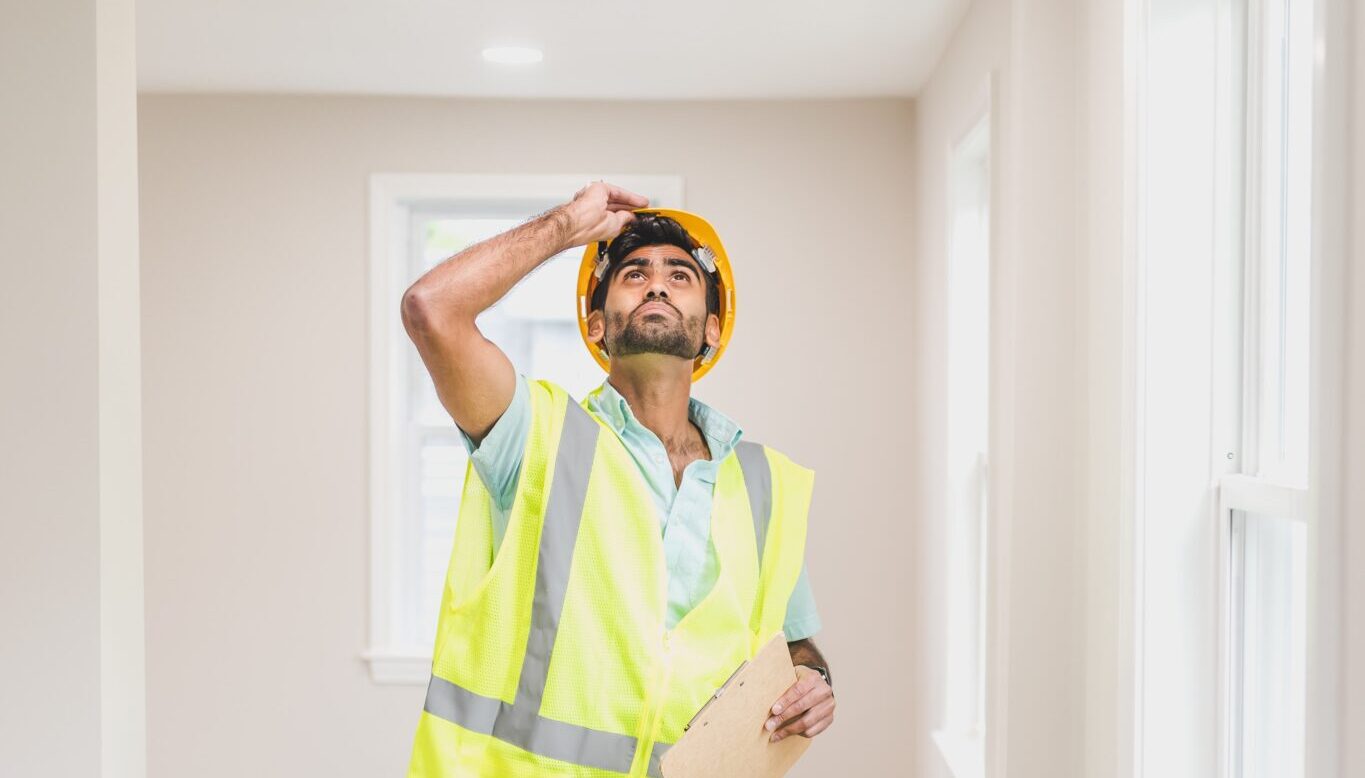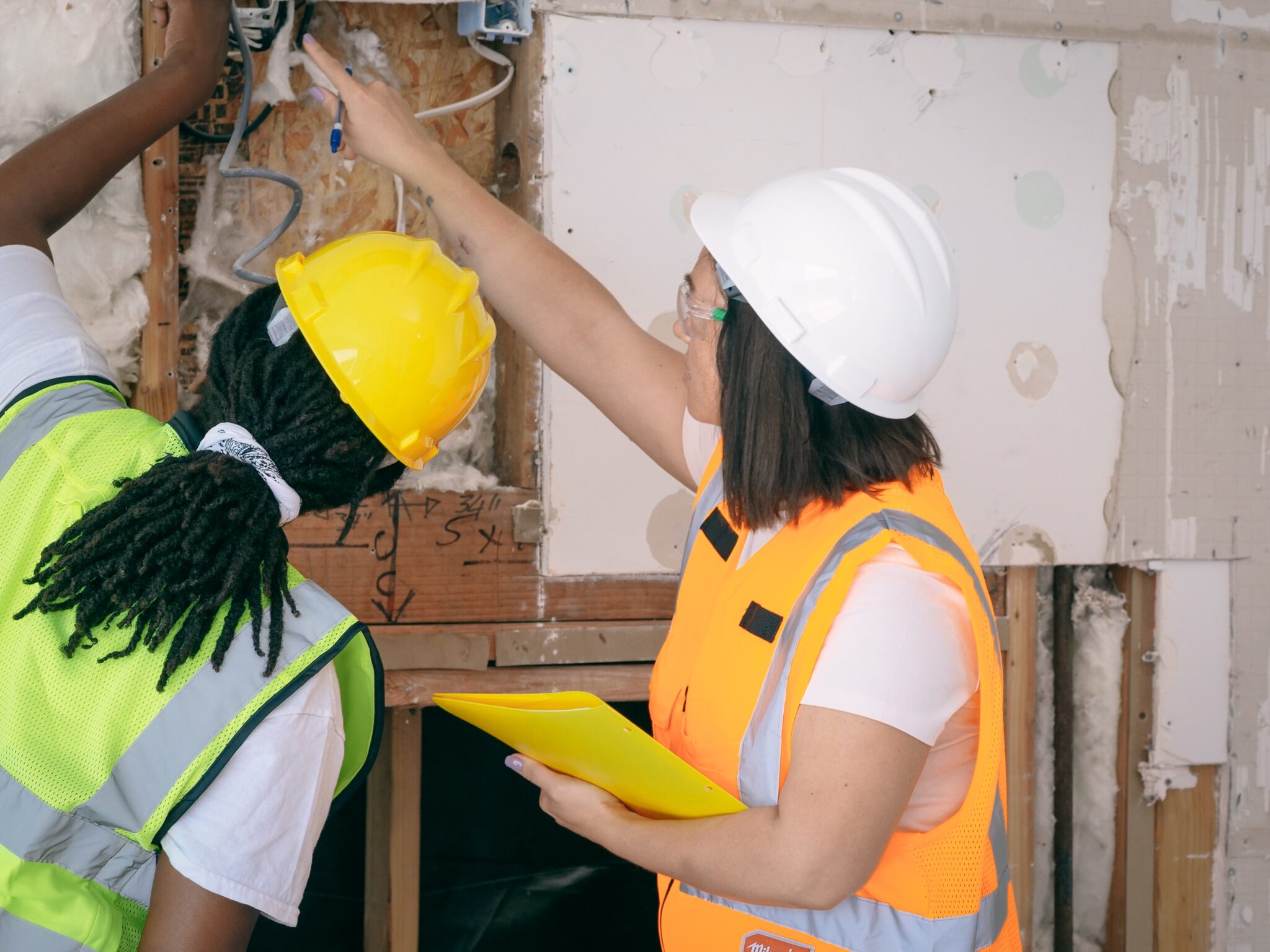
Everything You Need for a Residential Building Inspection Checklist
Constructing a building of any shape or size is complicated and requires specific guidelines that the entire construction team will need to abide by. Before you can start constructing the building in question, you must first obtain a building permit from the Los Angeles Department of Building and Safety. In order for this permit to be approved, you will need to submit building plans and similar documentation with your permit application.
Once you’ve received the necessary building permits, you can begin constructing the home with confidence that your building plans adhere to local building codes. When constructing a home, the LADBS is tasked with performing at least two residential building inspections to make sure that the construction process is being completed according to the building plans. By checking the progress at different intervals, any issues can be identified and corrected before the entire home is built.
While inspections are beneficial because of how they tell you what changes need to be made to the structure you’re building, any changes that the inspector requests will invariably cause delays to the construction process. You can naturally bypass these delays by creating a residential building inspection checklist. This checklist will tell you when inspections are needed, what occurs during the inspection process, and what aspects of the structure will be inspected. The following guide tells you all you need to know about residential building inspections.
What Are Residential Building Inspections?
When a new home is being built, multiple inspections must be performed by a professional inspector while construction is ongoing. The purpose of these inspections is to make sure that the construction work matches the building plans that were submitted to the LADBS. The number of inspections that are needed during the construction process largely depends on how complex the project is. More complex projects will require several inspections.
Most new construction projects for residential homes require 2-3 inspections, which include everything from a foundation inspection to the final inspection. There are certain components in as home that can’t be inspected once the construction process moves past a certain point. By obtaining an inspection at different moments during this process, you can identify and correct issues immediately, which should increase the quality of the construction that’s occurred.
The amount of time it takes to complete an inspection depends on the type of inspection that’s being performed. If you request a foundation inspection, the entire process should take around 1.5 hours to complete. On the other hand, the final inspection may take upwards of 3-4 hours depending on the size of the home. Once you request an inspection, the Los Angeles Department of Building and Safety will send over a professional inspector to take a look at the structure. Their findings will be given to you shortly after the inspection has been completed.

What Does a Building Inspection Include?
There are many different factors that you should consider when trying to understand what a building inspection will include. It’s important to look at each of these factors before you schedule an inspection. Doing so should make you more prepared for the process and what it will entail.
Essential Elements of a Residential Building for Inspection
The core elements of a residential building inspection include:
- Foundation, crawlspaces, and basements
- Roof, gutters, and chimney
- Windows and doors
- Electrical components, which include circuit breakers and electrical conductors
- Attic, ventilation, and insulation
- Any HVAC system that’s been installed during construction
- Plumbing system
Many of the aforementioned elements are inspected during the final inspection. On the other hand, there are two other types of inspections that are commonly performed while inspection is ongoing, which include a foundation inspection and a framing inspection. The foundation inspection will take place right before your construction team pours the foundation.
The purpose of this inspection is to make sure that the site has been properly graded and excavated to this point. Any issues that arise during this inspection must be corrected before the foundation is poured and the building’s framing is added. Corrections will be impossible to make later on in the construction process. The foundation inspection is also designed to check the footing and anchors to make sure that they are properly spaced. If the inspector finds that everything is in order, it’s likely that the home will have a strong foundation.
As for the framing inspection, this is a pre-drywall inspection that’s set to occur after the building’s frame has been fully constructed. At this stage of the construction process, all windows have been installed and the roof has been built. However, the walls have yet to be put in place.
During a framing inspection, the inspector will check to make sure that the studs, beams, posts, and similar structural components have been properly installed. The building’s plumbing, wiring, and window flashing can also be checked during this inspection, which is necessary since these components have yet to be positioned behind walls. If the inspector finds any problems with the building’s frame, the contractor can make quick repairs before continuing on with the rest of the construction process.
The final inspection is likely the most important of the three. The purpose of this inspection is to make sure that the home is safe to live in for the people who buy it. When an inspector performs the final inspection, they will be able to determine if the home meets local building codes. It’s during this inspection that all of the components mentioned previously will be thoroughly looked at. If circuit breakers aren’t working properly or the plumbing system hasn’t been installed correctly, the inspector will note these issues, after which the necessary repairs can be made.

The Importance of a Building Inspection
Building inspections are important for numerous reasons, the primary of which is that they allow the construction crew and general contractor to know when mistakes have been made. Let’s say that a home is built without a foundation inspection being ordered. There’s always a possibility that the building’s structural components weren’t properly installed, which would result in the home having a poor foundation. A home that has a bad foundation may not be as long-lasting as the eventual homeowner wants it to be.
These inspections are also important because they are required by the city of Los Angeles. When the LADBS provides you with a building permit, this permit is being approved under the belief that your construction crew will stick to the building plans that were given to the LADBS alongside the permit application.
If the crew makes a mistake, it’s possible that the building no longer meets local building codes, which means that the structure may not be safe to live in. Obtaining inspections at different intervals throughout the construction process should give you confidence that the structure is being built as intended. The main benefits of receiving regular residential building inspections include:
- Results of final negotiation allows price to be negotiated
- Problems during construction can be identified early on before they are impossible to correct
- The property owner or buyer can plan future repairs based on results
- You can be confident in the home’s structural integrity
- More extensive repairs can be avoided
If you make the mistake of not obtaining inspections during the process of building a home, the final structure may not meet local building codes, which could create issues if you attempt the sell the home in the future. In the event that the LADBS finds out that the structure doesn’t meet building codes, you could be fined. The work that you’ve done may also need to be torn down, which can be time-consuming and costly.
Understanding Building Inspections to Ensure Safety and Security
To understand the importance of residential building inspections, you should first know what can occur if these inspections aren’t performed. Along with the possibility of fines being assessed when the building doesn’t meet local building codes, the home itself may not be safe to live in.
The main reason that a structure is inspected several times during construction is to make sure that the people who end up living there will be safe. If the structure isn’t sound or the roof wasn’t installed properly, anyone who purchases the property would be at risk of injury or worse. By knowing what these inspections entail, you can facilitate a smooth construction process that takes every potential issue into account even before the inspection has occurred.

Residential Building Inspection Checklist Resources
If you want to know more about how to create a residential building inspection checklist, there are numerous resources that you can check out.
- Residential inspection checklist – This checklist gives you all of the info you need about residential inspections and the systems that are inspected. Get the residential building inspection checklist.
- General inspection checklist and info – This checklist goes into detail about why inspections are needed and what the process involves. Get the general inspection checklist.
- Homeowners guide to construction inspections – This document details the inspection process for single-family homes. Get the homeowners guide to construction inspections.
With these resources in hand, you should be able to prepare for any inspection that’s set to occur during the construction of a new home.

Jason Somers, President & Founder of Crest Real Estate
With over 15 years of professional experience in the Los Angeles luxury real estate market, Jason Somers has the background, judgement and track record to provide an unparalleled level of real estate services. His widespread knowledge helps clients identify and acquire income producing properties and value-ad development opportunities.
Learn more about Jason Somers or contact us.



